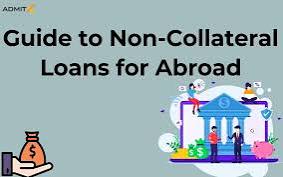Introduction
No collateral loans, also known as unsecured loans, are a great financial tool for individuals and businesses who need funds without pledging any assets. These loans are based on creditworthiness rather than collateral, making them accessible to a broader audience.
What is a No Collateral Loan?
A no collateral loan is a type of loan where the borrower does not have to provide any asset as security. Instead, lenders approve these loans based on credit score, income, and repayment history.
How Does a No Collateral Loan Work?
- Application Process – Borrowers apply by providing personal and financial details.
- Credit Evaluation – Lenders assess the applicant’s credit score and financial stability.
- Approval & Disbursement – If eligible, the loan amount is disbursed without requiring any security.
- Repayment – Borrowers repay the loan in fixed monthly installments with interest.
Types of No Collateral Loans
1. Personal Loans
These loans can be used for various purposes, including medical expenses, education, home renovation, and travel.
2. Business Loans
Small businesses and startups can benefit from unsecured business loans to manage cash flow and expansion.
3. Credit Cards
A credit card is essentially a revolving credit line that allows you to borrow money without collateral.
4. Student Loans
Educational loans without collateral help students finance their higher education without needing to pledge assets.
5. Payday Loans
Short-term loans that provide quick cash advances, usually repaid on the borrower’s next payday.
Eligibility Criteria for No Collateral Loans
- Minimum age requirement (usually 18 or 21 years)
- Good credit score (650+ preferred)
- Stable income source
- Low debt-to-income ratio
Advantages of No Collateral Loans
1. No Risk to Personal Assets
Since no collateral is required, borrowers do not risk losing property or assets.
2. Quick Approval Process
Most lenders offer fast approvals and quick disbursement compared to secured loans.
3. Flexible Usage
Funds can be used for multiple purposes without restrictions.
4. Builds Credit Score
Timely repayment helps improve the borrower’s credit score.
Disadvantages of No Collateral Loans
1. Higher Interest Rates
Lenders charge higher interest rates due to the increased risk of lending.
2. Stringent Eligibility Criteria
A good credit score and stable income are required to qualify.
3. Lower Loan Amounts
Borrowers may receive lower amounts compared to secured loans.
4. Strict Repayment Terms
Failure to repay on time can lead to penalties and a negative impact on credit scores.
How to Apply for a No Collateral Loan?
- Check Your Credit Score – Ensure your score is high enough for eligibility.
- Compare Lenders – Look for banks, NBFCs, and online lenders offering the best rates.
- Gather Required Documents – Prepare ID proof, income statements, and employment details.
- Apply Online or Offline – Submit your application through the lender’s website or visit a branch.
- Wait for Approval – If approved, the loan amount is credited to your account.
Tips to Get a No Collateral Loan Easily
- Maintain a high credit score
- Show proof of stable income
- Keep a low debt-to-income ratio
- Choose a lender with favorable terms
- Consider a co-applicant if needed
FAQs
1. Can I get a no collateral loan with a low credit score?
Yes, but it may come with higher interest rates or lower loan amounts.
2. What is the maximum amount I can borrow without collateral?
The amount depends on the lender and your credit profile, usually ranging from $1,000 to $50,000.
3. How long does it take to get approval?
Most lenders approve loans within 24-48 hours if all documents are in order.
4. What happens if I default on a no collateral loan?
Defaulting can negatively impact your credit score, and lenders may take legal action to recover the amount.
5. Are there any hidden charges?
Some lenders may charge processing fees, late payment penalties, or prepayment charges. Always read the terms carefully.
Conclusion
No collateral loans provide financial flexibility and quick access to funds without the need for assets. However, they come with higher interest rates and strict eligibility criteria. Before applying, it is essential to compare different lenders, check repayment terms, and ensure you have a solid financial plan to avoid defaults. With the right approach, a no collateral loan can be a valuable financial resource.
